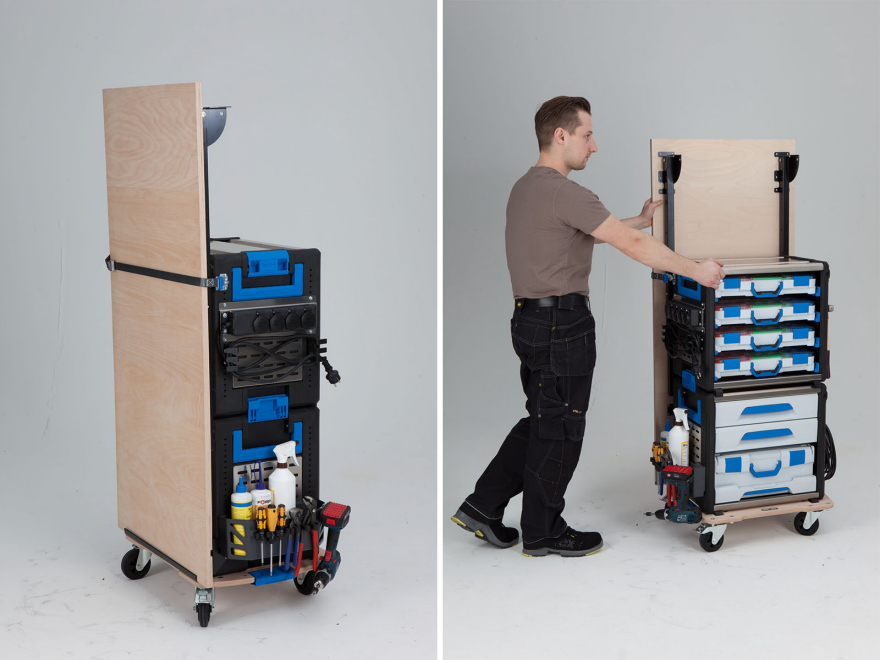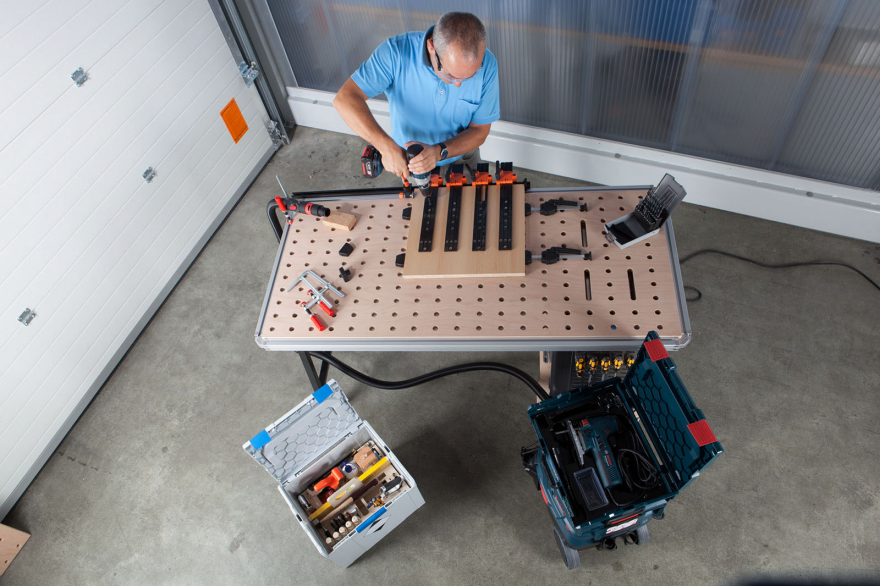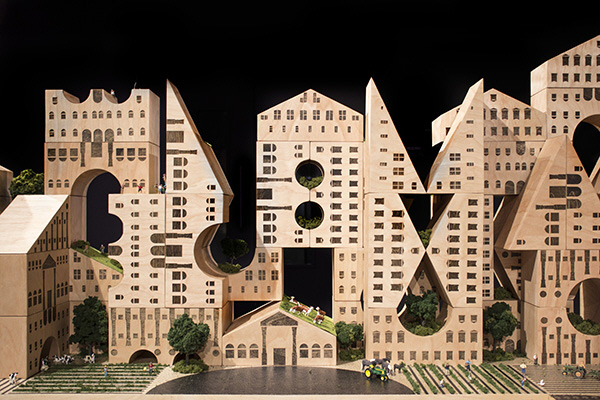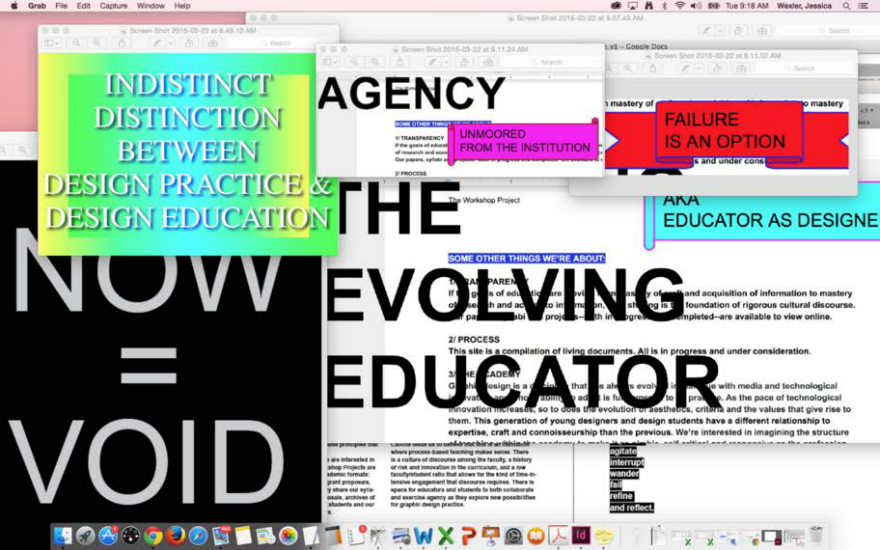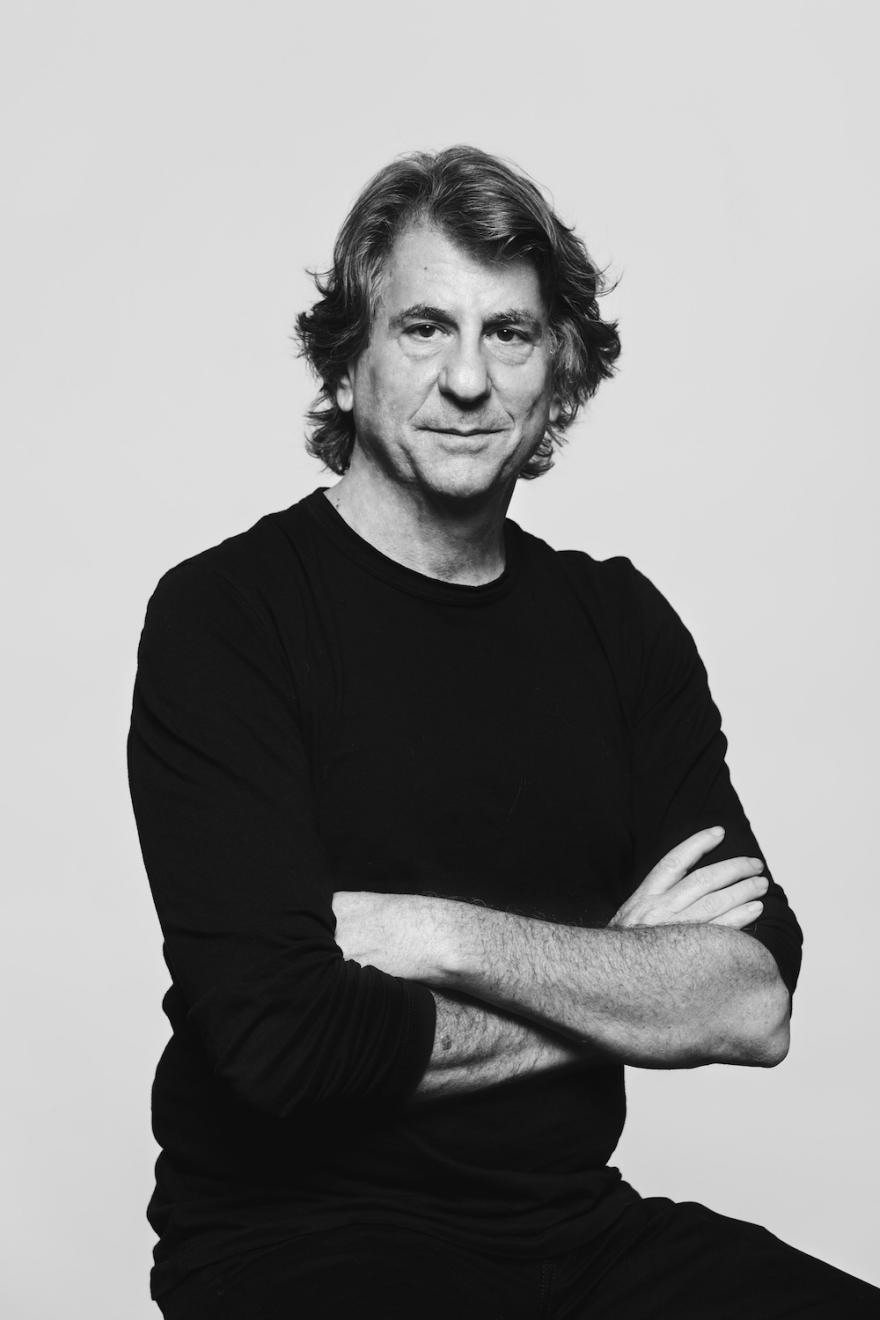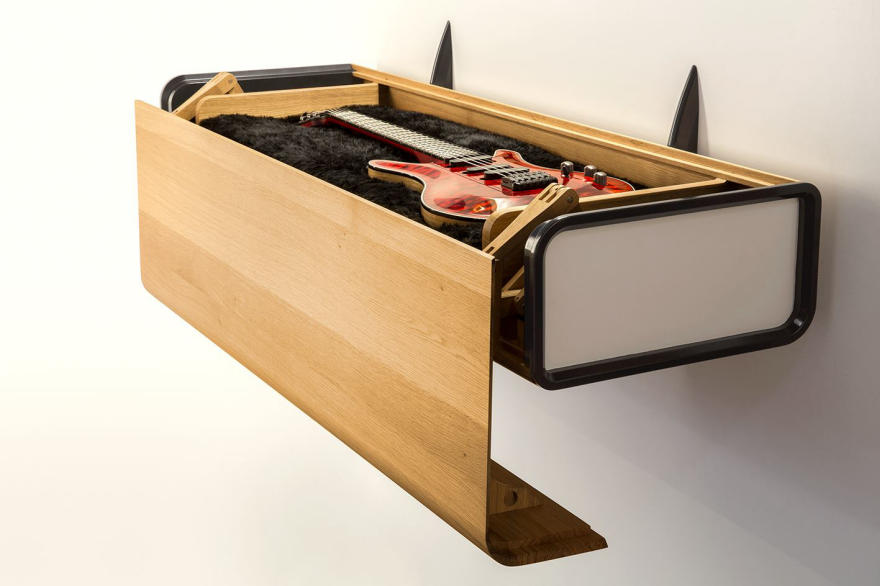Here's Part Two of our interview with Michael Bücking, Headmaster of the Holzfachschule Bad Wildungen, a German school that offers masterships in a variety of craft disciplines. (Read Part One here.) Here Bücking describes the admissions procedure, the pass/fail rate, how he himself became a Tischlermeister, Germany's dual system of study & work, the future of craft education in Germany, what design educators from other nations could learn from Germany, and what German instructors could learn from them.
We start off with a surprise about how to get into the school:
Core77: What is your admissions procedure like?
Michael Bücking: Say again?
The admissions procedure to get into the school, is it tough? Is it...
No. Basically you just enroll. The tough part is the exam.
The exam where you must, among other things, submit a masterpiece [as shown throughout this entry] to a commission that will pass or fail you?
Correct.
What is the rate of people that cannot pass the exam?
Here's what I tell these guys on the very first day: "This is not nuclear physics, what we are doing here. So, we need a basic understanding and talent and a high level of commitment. And then you have a very fair chance to pass it." The key to the success of this course is commitment, focus, discovering weaknesses and working on the weaknesses.
And that's because the variety of things which are required is huge. We start with the understanding of law, how to run a company, how to train apprentices as psychological and pedagogical skills are also required. And then we talk about the technical side and the skill side and the design side. So it's huge. It's huge.
And the key thing is basically to manage that process. It's the same as running a building site where you've got many tasks and requirements. The job of a successful master is to get these things in line. And it's more getting yourself organized and being focused and delivering the right things at the right time. So this is more important than having very special talent. I think it's an exam which focuses on who is actually capable of surviving the whole thing, if I may phrase it that way, because we do need so many skills.
In the past, what was required was almost perfect craftsmanship. If you're not a very high level craftsman it would be very difficult to pass that. But now the masterpieces, for example, if you design them in a way that you manufacture them entirely on a CNC machine, it's fine. It just needs to be completed at the delivery date. This is the main task. If not, then you do have a problem.
Because the program is relatively short in terms of overall length of time, if a student starts to go astray, is there an opportunity for the faculty to correct? Or is that completely up to the student?
We have a slogan which is, I'll just phrase it in German, "Einmal Holzfachschule, immer Holzfachschule." It means "Once you've been in our place, you'll always be one of our students." The pass rate is about 75 or 80%. And if you fail the first time and you have the commitment, and let's say only one portion you didn't manage well, then you come back to our place, and they can stay at our place and prepare themselves again for that exam.
It's also a tough program in the sense that I believe that we are an adjunct education. I'm not keeping any list who's there or who's not there, we don't have an attendance list. People are just there, full stop.
[Our talk turns to Thomas Sekula's masterpiece, the centerpiece of the booth, shown in the video below.]
We chose this one to display because this is a very small piece. For masterpieces we quite often have furniture or even doors which are much bigger than that one. But since we are in a show we decided to take a very small one which is easy to transport.
But if you look at the level of craftsmanship—they're supposed to do that in just 18 days—and he did that with conventional technology. There is hardly any CNC technology involved in it. It's a very fine piece of art, to my opinion.
Would you mind telling us about your own education, and comparing it to current day? And for scale, do you mind telling us how old you are?
No, of course. I was born in '61. When I was 18 I finished high school and being in the educational process for 13 years, that's how long it takes in Germany to get a high school degree, I was a little bit tired of going to school and not keen to start studying again immediately. So my plan was to do an apprenticeship for about three years.
At that point did you already have some skill with tools?
My father was in the timber trade, so I grew up more or less in a timber trade shop. But this was the only connection I had to the material. I'm sure I would have made a lousy metalworker or whatever.
So I had a fascination for the material for sure. This was first. And creativity was important to me, the idea that you can make a lot of things for yourself. That was basically my starting motivation and [what set me on the path].
And after finishing the apprenticeship—
Sorry, if we can back up a step—when you decided you wanted an apprenticeship, how did you go about finding one?
Oh, basically you have to link yourself to a real company, so what you do is you apply to workshops. In Germany we have this dual system where you join a company and one or two days every week you're going to school.
You mean you're going to school one day a week for a topic related to the job, right?
Yeah, of course. It's a vocational school. And what they do is they do the theoretical backstopping, basically, of what's happening every day in the workshops. I think it's a very successful scheme because you're also getting practical, firsthand experience. And it's an ordinary, everyday starting-at-6:30-in-the-morning workshop situation.
And after that, we're making the apprenticeship. And then you're becoming a journeyman. So this is how it's organized in Germany.
And then of course additional things in training courses are covered by schools. So it's having actually two pillars. It's not like a vocational school which you join where after two or three years you have to find a job in the free market. So it's basically almost a pre-education, if you want to put it that way.
And after that time, I always wanted to work abroad. But I realized that after completing my apprenticeship I didn't have so much experience. So I worked for three years as a journeyman.
Does "journeyman" mean the same thing in English as it does in German, can you elaborate?
It means you have qualification as a joiner. The term is from the old days when a journeyman is somebody who has finished his apprenticeship and is traveling from one workshop to the next. That's something which people still do, but very seldom. So I believe the correct English word is also journeyman. Or you can call it qualified joiner.
After that I did my mastership, in a similar training program like the one I'm working for at the moment, and covered these three years of experience that I had to cover. And after completing my mastership, I went for four years to East Africa. As part of what's like, the German version of the Peace Corps, just a bit better paid.
Were you building things there?
No, I was running a training school for unemployed Zambian young kids, school-leavers, and basically giving them a basic education and training in carpentry and joinery.
When I came back to Germany I was 30. And so I studied timber engineering in Rosenheim, which is one of the places in southern Germany. So I became an engineer in woodwork or secondary wood processing.
And after that, directly after that, I went to Malaysia. I was working in Malaysia for a big timber company doing training and research. So at that time it's also an issue. Malaysia, our company had about 13,000 people in the timber industry and maybe five people being trained in the timber industry. And they all came from abroad. So they did an excellent job, but it was also a lot of learning by doing. And we had several plywood mills and MDF factories but no people who could run it.
We had very capable mechanical engineers and electrical engineers from the Philippines, but when it came to the specific knowledge about timber and marketing it worldwide they had not a clue. So I was establishing together with German colleagues this training school attached to the company in Malaysia and came back in the year 2000. And since 16 years I'm working for that school basically working as a trainer as the headmaster of that one.
Wow. Your career path sounds pretty broad.
Yeah. Well, it's actually fairly straightforward because I stuck with two things. One is the material itself. Two is, for almost 30 years now, training. So I work now as a consultant. And once or twice a year I'm happy to be at the airport and then flying somewhere and also working on vocational training wherever.
Okay. And then once your students graduate do you have any contact with them?
Yeah. Today it's very quiet. Yesterday was a meet and greet here all day. And the good thing is that particularly the timber industry is a fairly small one. The craftsmanship industry is also very small. But by now our schools in the last 16 years, I was just counting them, we've trained more than 1,000 master craftsman. And it's wherever you go, they are there. So that's very amazing, actually.
And also we are working with some American window manufacturers together. And some of our students, they go to America, and we just send them all over the place.
What's your forecast for the state of education for these types of crafts? Are you fearful or hopeful?
Well, that's a very interesting question. For the generalist—I mean, the joiner who's doing everything more or less out of wood—what I've observed in the last 15 years was a change towards specialization. For example, in the old days we had a lot of workshops employing five, six people. They had a few jobs each year where they made their own windows, let's say they manufactured 100 windows a year.
Those times are over. Now we have specialized window manufacturers, and they do a much better job than those who do a window occasionally. And then we have also a concentration on being able to order different parts of things. Like, if you build some cabinets, what they do now is they buy the sides and the shelves and the backs of the cabinets. They just buy it from a supplier. That supplier could have previously been a joiner workshop which is just bigger and specializes on that technology.
So even if you do have the design competence, and the access to a client base, a lot of people are just fitting things on building sites. They get it as knock-down kits or preassembled. Yes, they take the measurements, they order it, organize it, but the level of how much they actually produce by themselves, in their own workshops, is going down, down, down.
So it becomes more like assembly than craftsmanship. Are you hopeful for the future of German craft?
That's also a very interesting question. On one hand, I think we have got an excellent vocational training system here in Germany. It's this combination between practical experience and the workshops if you do the apprenticeship and the school system. But, we are becoming a more sophisticated trade on one side. And it's very difficult to get the right people because, as I said, we are competing with even better paid jobs. If you look at mechanical engineering, for example, the wages there are better, and then of course they are getting the best people. And so therefore we do need people who love that material. But therefore you need passion and brains at the same time.
Do you think that that passion is inculcated in children anymore?
I believe it's not so attractive anymore. And therefore we are just simply talking about numbers in terms of how many graduates do we have. And we Germans are not very good at repopulating ourselves. So we have got not enough people, or people with the wrong level of qualification.
[Another tricky situation is that we are within] the context of the EU. Since we have open borders, I could open a workshop in Spain tomorrow if I wanted to. But in Spain, for example, they do not have this formal training. They don't have these mastership schedules as well. So we're supposed to lower our levels to allow [joiners from EU countries without these standards] to run their own workshops here as well.
So it's a kind of competition in terms of quality and price. And this of course makes it very hard for German craftsmen to survive these challenges. But on the other hand I also believe it doesn't make sense to protect the market just to keep your standards. Because then you're slowly becoming not competitive anymore.
So I'd say there are politics required here just to try, in my opinion, to maintain the high level of craftsmanship, but it's a competition which doesn't make it easy to survive.
That is a tricky situation. If craft educators from around the world came to Germany to study the German system, what are the qualities that you would hope they could learn from here, and what could the German system learn from them?
Well, something which amazes me throughout the world is that you have a lot of creativity. And creativity is sometimes killed by the German system because we are thinking very formal. So I think it would be perfect to inbreed this international culture of just doing things and doing it in a good, interesting way into the German system.
On the other hand, something where Germany I think is quite good is our education system. In my opinion, we are not supposed to separate between the artist and the craftsman. I mean, it was done in the Bauhaus in the '20s or '30s where we worked together basically as creative minds on one hand and also had craftsmanship on the other.
So, I believe, to my opinion, both are possible. Both are needed, actually. And to me [an exchange like you're describing] would be of a mutual benefit, honestly. I think the Germans could learn to be a bit more open, a bit more creative and a bit more adventurous. And if we could bring a little bit of, well, structure and material knowledge and technology into that exchange as well, I think it would help both sides. So, this is my hope for the future if I may phrase it that way.
Lastly, is there any quality about your school in particular you'd like to tell us about?
I think the good thing about our place is that while we call ourselves a school, from 16 people which are on our technical staff, we only have one [person who technically qualifies as a] teacher. Our instructors all worked in the industries and learned the trades before coming to our place.
If you can call it a weakness, we are not very good in theory. But we are excellent on the practical side. And this comes first at our place. And then we put the theory part attached to that one.
It's essentially this: As I tell the students, we give you a playground. And the toys. But what's happening in the workshop which we provide for you just depends a lot on you. So, yes, we leave room for their own self-improvement, which is sometimes very tricky because you're opening up your workshop for 60, 70 strangers every year. And each workshop is worth a quarter of a million Euros and we say, "Well, here's the key." But the good thing is if the group works, the system works as well. So at the moment we have had only very few and limited bad experiences in terms of people misusing that one. But in general it works.
Lastly, our guys are always accessible. Nobody's going home at 11:00 in the morning because school is finished and they don't have any lessons anymore today. Each and everybody is there. And you can talk to them. I think this is one of our biggest competitive edges.
![]()
